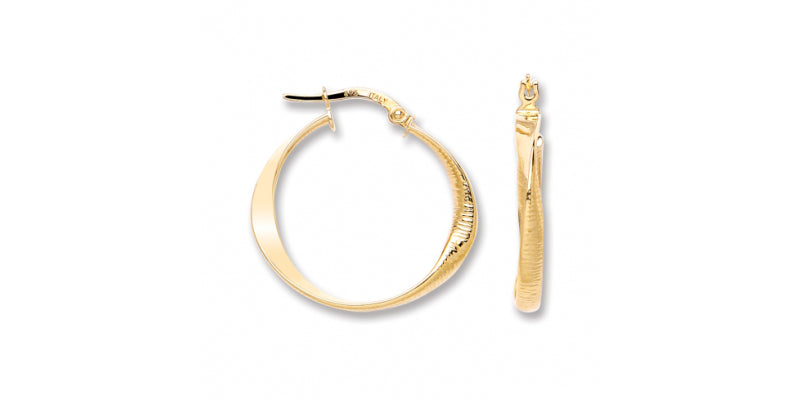Tarnish free jewellery: Explaining gold plating and microns
Tarnish-Free Jewellery and Gold Plating Demystified
In the world of jewellery, the quest for enduring beauty has led to the creation of tarnish-free jewellery.
This is where innovation meets artistry, resulting in pieces that remain radiant, no matter how many times they're worn.
Today, we embark on a journey to explain what tarnish-free jewellery is, the intricacies of gold plating, and why some pieces of jewellery can lose their luster over time.
Tarnish-Free Jewellery:
Tarnish-free jewellery is crafted with meticulous precision and innovative techniques to resist the natural processes that dull its brilliance.
This exceptional quality is achieved through the application of protective layers or the use of metals that inherently resist tarnishing.
Gold plating is a transformative process that involves depositing a layer of gold onto the surface of another metal.
This not only imparts a captivating hue but also enhances the durability of the jewelry.
Let's look into the different types:
24K Gold Plating:
The pinnacle of opulence, 24K gold plating is renowned for its pure gold content.
Its deep, rich color exudes a sense of regality. However, due to its softness, it may be more susceptible to scratches and could require additional care to maintain its gleam.
18K Gold Plating:
Slightly less pure than 24K, 18K gold plating strikes an elegant balance between luxury and durability.
Its alloy composition provides a sturdy foundation while retaining a lavish finish, making it a popular choice for high-quality jewellery.
14K Gold Plating:
This type of gold plating offers a harmonious blend of affordability and enduring radiance. Its composition strikes a balance between longevity and a captivating golden hue.
Gold Vermeil:
A departure from traditional gold plating, vermeil involves a thicker layer of gold (usually at least 2.5 microns) applied to sterling silver.
This technique yields pieces that boast the appearance of solid gold, yet retain the intrinsic value of the sterling silver base.
Rhodium plated:
Rhodium plated silver is highly resistant to tarnish.
Rhodium is a rare and precious metal that belongs to the platinum group.
When used as a plating for silver jewellery, it forms a protective barrier, preventing the silver from coming into contact with air and moisture, which are the main culprits of tarnishing.
Rhodium plating not only enhances the appearance of silver jewellery, giving it a bright, white finish, but it also provides a durable and long-lasting protective layer.
This makes rhodium plated silver an excellent choice for those seeking low-maintenance and tarnish-resistant jewellery.
Microns. What are they?
Microns are a unit of measurement used to express the thickness of a layer of material.
In the context of gold plating, "microns" refer to the thickness of the gold layer applied to the surface of a base metal.
When we talk about gold plating, the thickness of the gold layer is a crucial factor.
A thicker layer generally means greater durability and longevity for the plating.
1 Micron Gold Plating:
This is considered a light layer of gold plating.
It's commonly used for decorative or fashion jewellery.
While it provides a luxurious appearance, it may wear off more quickly with regular use.
2 Microns Gold Plating:
A step up from 1 micron, 2 micron gold plating is thicker and more durable.
It's suitable for jewellery that is intended for regular wear.
This level of plating offers a good balance between aesthetics and longevity.
3 Microns Gold Plating:
3 micron gold plating is even thicker and more robust.
It's often used for high-quality and fine jewellery.
This level of plating is suitable for pieces that will experience significant wear and tear.
Considerations:
Durability: The higher the micron count, the more durable and long-lasting the gold plating is likely to be. This makes it a preferred choice for jewellery that will be worn frequently.
Cost: Generally, thicker gold plating with higher microns tends to be more expensive due to the increased amount of gold used in the process.
Appearance: Higher micron counts may also affect the appearance of your jewellery. Thicker layers can result in a more pronounced gold color.
Maintenance: While thicker plating is more durable, proper care is still essential for maintaining the appearance and longevity of gold-plated jewellery.
It's important to note that even with higher micron gold plating, all plated jewellery will eventually wear over time.
Factors like frequency of wear, exposure to harsh chemicals, and abrasion can contribute to the gradual wearing off of the gold layer. Therefore, caring for your gold-plated jewellery is key to prolonging its beauty.
Which Jewelry Will Tarnish?
While tarnish-free jewellery resists the passage of time, not all pieces are immune to dulling. Here are some types of jewellery that may be more prone to tarnishing:
Silver Jewellery: Sterling silver, while beloved for its lustrous charm, can tarnish over time when exposed to air and moisture. If you want long lasting silver jewellery then rhodium plating is the way to go.
Brass and Bronze Jewellery: These metals can develop a patina, which some consider an appealing natural tarnish, but it may not be desired for every piece.
Costume Jewellery: Often made with base metals and lower-quality plating, costume jewellery will probably tarnish more quickly than higher-quality pieces.
The marriage of tarnish-free jewellery and carefully chosen gold plating elevates your adornments into heirloom-worthy treasures.
By understanding the nuances of gold plating and recognizing which metals are prone to tarnish, you can curate a collection that will shine for generations to come.

